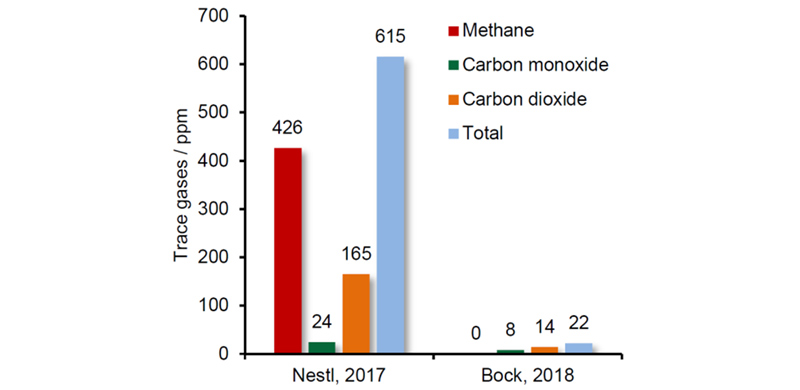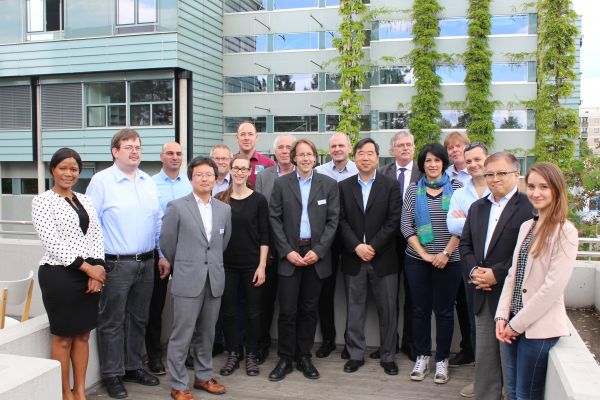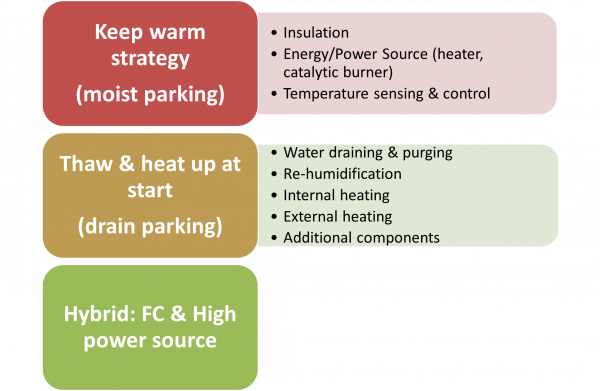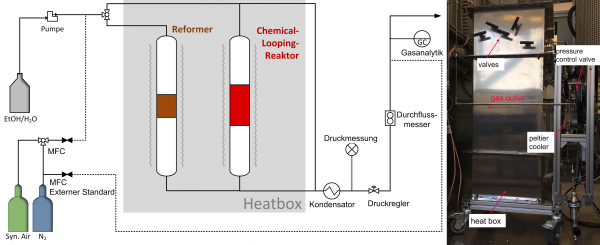IEA AFC Annex 31: Polymer electrolyte membrane fuel cell (Working period 2017 - 2019)
Short Description
Polymer electrolyte fuel cells are suitable for various uses. This includes the use in devices, such as portable computers and smartphones, as well as for transportation in automotive applications and for decentralised energy supply in combined heat and power units (CHPs) for stationary application.
The research and development activities within annex 31 include all aspects of PEFCs (polymer electrolyte fuel cells) and related fuel processing.
The improvement of catalyst activity within electrolytes containing phosphoric acid has been investigated. To obtain more stable Pt-based systems, polyaniline (PANI) coated catalysts with various amounts of PANI have been synthesized and characterized.

Lifetime sustainment and improvement of PEFCs has been researched by investigating low temperature (T<0 °C) start-up and shutdown operations. Extensive electrochemical and analytical characterisation has been utilized to determine the mechanisms of degradation and to develop innovative strategies for start-up and shutdown in e-mobility applications.
Additional investigation towards degradation effects has been conducted in regards to gaseous impurities within the fuel. By adding specific contaminants, e.g. H2S or CO, to the hydrogen stream and using a segmented cell, the influence of these trace compounds is investigated in long term experiments of over 1000 h.
Fuel processing and supply is of ultimate importance for the establishment of hydrogen and fuel cell based mobility concepts. In the reformer steam iron cycle (RESC) a reductive syngas stream from steam reforming is utilized as reduction agent for iron oxide pellets. By re-oxidation of this oxygen carrier material, pure hydrogen is evolved. A proof of concept plant for releasing ultra-pure hydrogen at elevated pressure has been built. The focus for R&D has been on process parameters, synthesis of the oxygen carrier and the influence of trace contaminants in the feed on the product gas purity.
Project Images
Terms of use: The pictures listed underneath the header “Project Pictures” originate from the projects in the frame of the programmes City of Tomorrow, Building of Tomorrow and the IEA Research Cooperation. They may be used credited for non-commercial purposes under the Creative Commons License Attribution-NonCommercial (CC BY-NC).
Publications
Publications are available on the website of IEA AFC Annex 31.
Participants
Austria, Canada, Denmark, Finland, France, Germany, Israel, Italy, Japan, Mexico, South Korea, Sweden, USA
Contact Address
Brigitte Hammer, Bakk.
Prof. Dr. Viktor Hacker
Technische Universität Graz
Institut für Chemische Verfahrenstechnik und Umwelttechnik
Brennstoffzellenlabor
Inffeldgasse 25 C, 8010 Graz
E-Mail: brigitte.hammer@tugraz.at
Tel.: +43 (316) 873-8781




